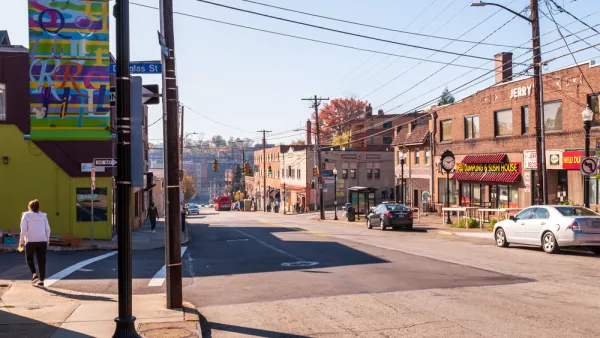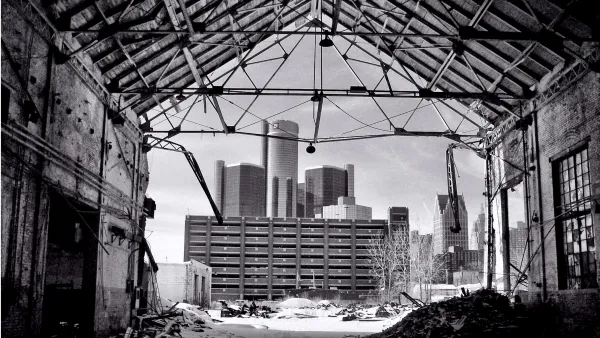For nearly all of my adult life, I have lived in small towns or urban neighborhoods. But for the past two years, I have lived in sprawl. When I moved to Jacksonville two years ago, I moved to Mandarin, a basically suburban neighborhood about nine miles from downtown. As I looked for apartments in 2006, I noticed that in many ways, Mandarin is typical sprawl: our major commercial street (San Jose Boulevard) is as many as eight lanes in some places, and even most apartments are separated from San Jose’s commerce. [See http://atlantaphotos.fotopic.net/c872477.html for my photos of Mandarin and other Jacksonville neighborhoods.] I thought Mandarin would be a typical suburb: homogenously white and upper-middle class.
For nearly all of my adult life, I have lived in small towns or urban neighborhoods. But for the past two years, I have lived in sprawl. When I moved to Jacksonville two years ago, I moved to Mandarin, a basically suburban neighborhood about nine miles from downtown. As I looked for apartments in 2006, I noticed that in many ways, Mandarin is typical sprawl: our major commercial street (San Jose Boulevard) is as many as eight lanes in some places, and even most apartments are separated from San Jose's commerce. [See http://atlantaphotos.fotopic.net/c872477.html for my photos of Mandarin and other Jacksonville neighborhoods.] I thought Mandarin would be a typical suburb: homogenously white and upper-middle class.
But in fact, Mandarin has the same kind of social mix as some of Jacksonville's more urban neighborhoods. Like many urban neighborhoods, Mandarin has rich and not-so-rich blocks: the rich live in Mandarin's western edge along the St. Johns River, the areas between the river and San Jose Boulevard (our major commercial street) are middle-to-upper-middle class, and the areas east of San Jose are more humble. And Mandarin has a few apartment complexes, which tend to be not so fancy: my own complex (the most expensive in the area, and the only one west of San Jose) is dominated by retirees, and others are dominated by working-class families of all races. Our retail is not just "big box" stores like Target and Wal-Mart: we have Brazilian, Russian and Asian supermarkets, as well as a variety of ethnic restaurants.
But Mandarin's diversity is not always a good thing: just as residents of walkable urban neighborhoods often don't go north of street X or east of street Y at night in order to avoid crime, Mandarin has a bona fide rough area - a street full of highly affordable apartment complexes where there have been at least two murders in the past two years. And I've been confronted by panhandlers twice in the last few weeks. I worry that Mandarin may be turning into one of Jacksonville's declining inner suburbs, a place forsaken both by urbanites who prefer more walkable neighborhoods and by suburbanites who prefer newer, safer suburbs.
So what have I learned from my years in Mandarin? That both the optimists and the pessimists about suburbia are right. Optimists correctly point out that suburbia is inheriting the diversity of cities- not just their ethnic and economic diversity, but their diversity of commercial forms: the notion that Wal-Mart is a natural monopoly is, in the setting of a large city, simply rubbish.
But pessimists are correct in worrying that as suburbs inherit urban diversity, they may inherit urban crime and decay.

Analysis: Cybertruck Fatality Rate Far Exceeds That of Ford Pinto
The Tesla Cybertruck was recalled seven times last year.

National Parks Layoffs Will Cause Communities to Lose Billions
Thousands of essential park workers were laid off this week, just before the busy spring break season.

Retro-silient?: America’s First “Eco-burb,” The Woodlands Turns 50
A master-planned community north of Houston offers lessons on green infrastructure and resilient design, but falls short of its founder’s lofty affordability and walkability goals.

Test News Post 1
This is a summary

Analysis: Cybertruck Fatality Rate Far Exceeds That of Ford Pinto
The Tesla Cybertruck was recalled seven times last year.

Test News Headline 46
Test for the image on the front page.
Urban Design for Planners 1: Software Tools
This six-course series explores essential urban design concepts using open source software and equips planners with the tools they need to participate fully in the urban design process.
Planning for Universal Design
Learn the tools for implementing Universal Design in planning regulations.
EMC Planning Group, Inc.
Planetizen
Planetizen
Mpact (formerly Rail~Volution)
Great Falls Development Authority, Inc.
HUDs Office of Policy Development and Research
NYU Wagner Graduate School of Public Service




























